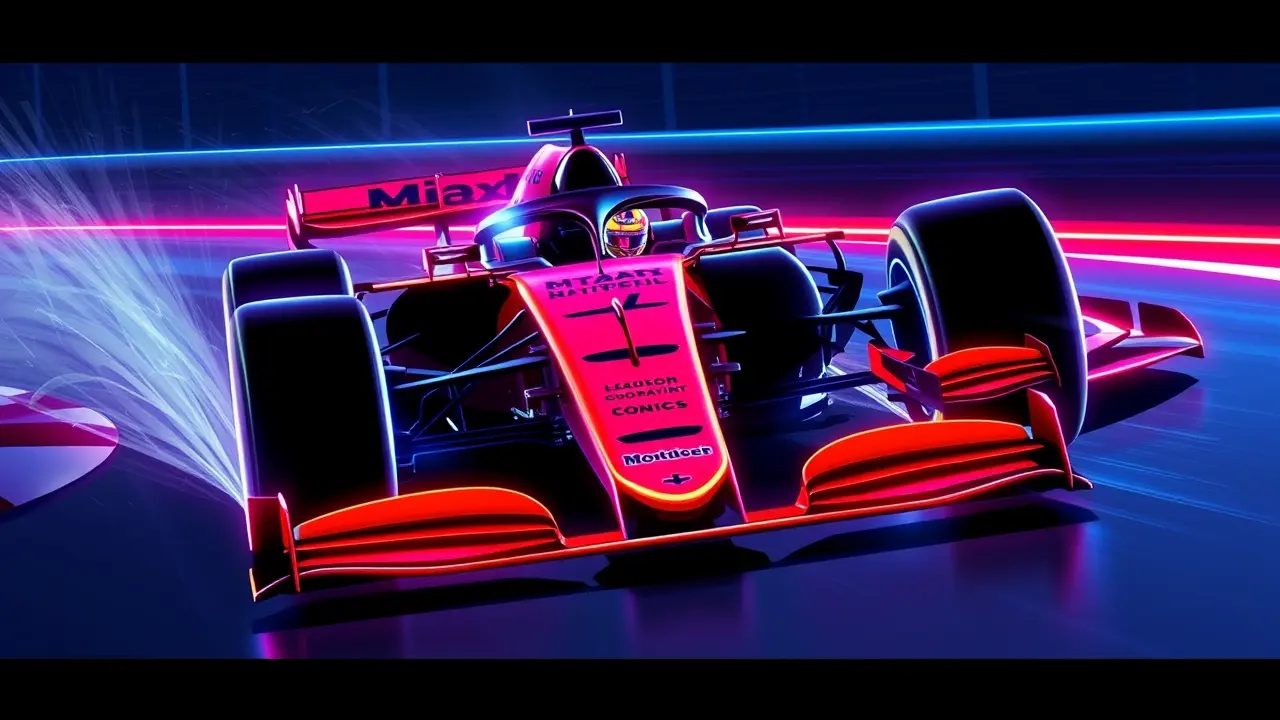Juan Pablo Montoya: Piastri acted like a fool against Norris.
In the high-stakes chess match that is Formula 1's opening lap, where instinct and ambition collide with cold calculation, McLaren's Lando Norris executed a move that was both brutally effective and emblematic of a shifting team dynamic, a maneuver that the great Ayrton Senna himself would have applauded for its audacity and precision. According to the uncompromising analysis of former F1 star Juan Pablo Montoya on his MontoyAS podcast, Norris’s teammate, the promising rookie Oscar Piastri, was made to look like a novice, leaving the door open ‘like never before’ as the pack surged into the first corner of the Singapore Grand Prix.Montoya, a driver never known for pulling his punches, dissected the incident with the clarity of a seasoned tactician, pointing out that while Norris did what any top-tier competitor is programmed to do—spotting Piastri’s hesitation on the exit and diving ferociously to the inside—Piastri reacted with a panicked, almost foolhardy lunge to the outside, a desperate attempt to cover a line that was already lost. This wasn't just a simple overtake; it was a psychological masterclass, a moment where Norris, increasingly the team's de facto leader, demonstrated a race-craft maturity that Piastri has yet to fully cultivate.The Colombian veteran’s critique cuts to the very heart of the delicate, often explosive, relationship between teammates in Formula 1, a sport where internal rivalry is as much a part of the fabric as tire compounds and aerodynamic downforce. He praised Norris for ‘starting to take the initiative’ and ‘showing himself,’ drawing parallels to legendary intra-team rivalries like Senna versus Prost at McLaren or Hamilton versus Rosberg at Mercedes, where one driver’s assertiveness fundamentally reshapes the team’s competitive hierarchy.Yet, in a fascinating twist, Montoya also highlighted the inherent contradiction within McLaren’s own ‘philosophy,’ suggesting that while Norris ‘did nothing wrong’ in the pure, unadulterated pursuit of victory, he may have ‘crossed a line’ according to the team’s internal code of conduct, a subtle nod to the political minefield drivers must navigate behind the scenes. This incident is far more significant than a single position change on a Sunday afternoon; it’s a data point in the season-long narrative of Piastri’s development against the established force of Norris.The Australian, for all his prodigious talent and race-winning potential, was shown in that instant to be vulnerable under immediate pressure, a lesson that will be seared into his memory far more effectively than any post-race debrief. For McLaren, the conundrum is a classic one: how to manage two elite drivers without stifling the competitive fire that makes them great.Do they rein in Norris to protect Piastri’s confidence, or do they let them race and risk the kind of internecine warfare that can derail a constructor’s championship campaign? The team’s handling of this nascent rivalry will be scrutinized as closely as their car’s upgrade package at the next race. Montoya’s blunt assessment—that Piastri acted ‘like a fool’—is the kind of unfiltered expert commentary that cuts through the usual PR-speak, providing a stark reminder that in the razor-thin margins of F1, mental fortitude is as critical as a perfectly tuned power unit. As the season progresses, all eyes will be on the McLaren garage, watching to see if Piastri can learn from this public schooling and strike back, or if Norris has firmly established himself as the team’s undisputed alpha, a status earned not just with raw speed, but with the cunning and ruthlessness of a champion.
It’s quiet here...Start the conversation by leaving the first comment.
© 2025 Outpoll Service LTD. All rights reserved.
